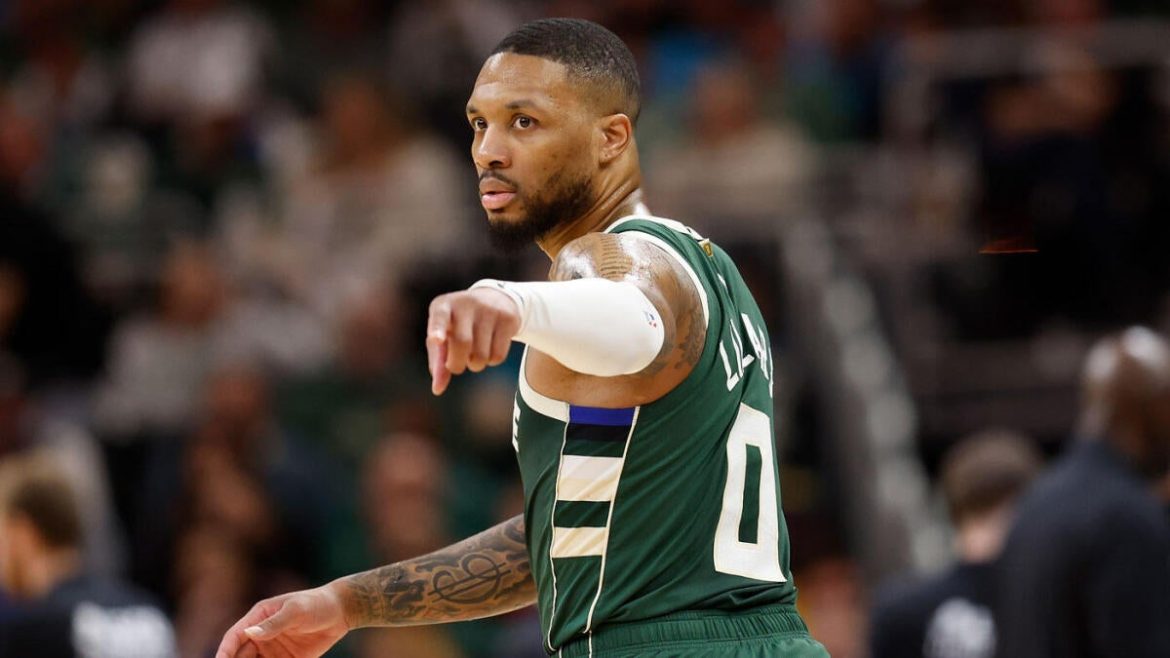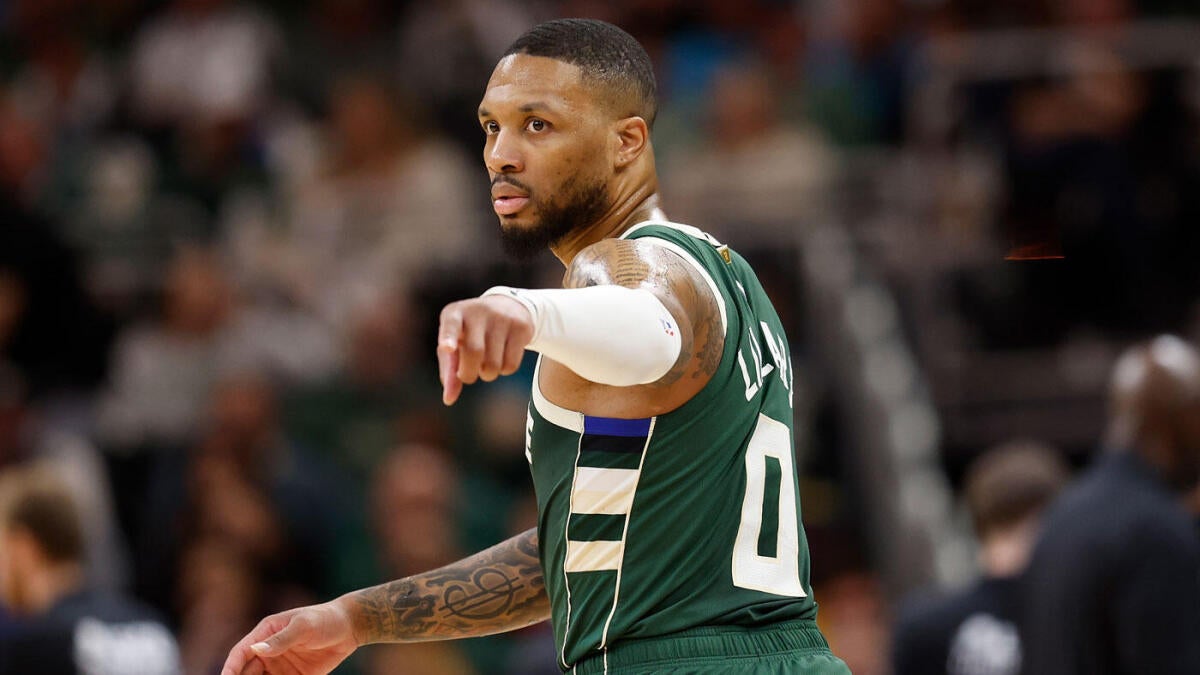The NBA offseason is a period of intense activity, marked by trades, free-agent signings, and strategic roster adjustments. However, few moves have generated as much shock and speculation as Damian Lillard’s sudden departure from the Milwaukee Bucks. Just months after being acquired in a high-profile trade designed to bolster the Bucks’ championship aspirations, Lillard finds himself a free agent, creating a domino effect that has sent ripples throughout the league. This analysis delves into the circumstances surrounding Lillard’s unexpected free agency, explores potential landing spots, and examines the broader implications for both Lillard and the teams vying for his services.
A Sudden Shift in Milwaukee
The Bucks’ decision to waive Lillard, stretching his remaining $113 million contract, was a move that caught many by surprise. The decision was driven by the need to create cap space for another key acquisition: center Myles Turner, who signed a four-year, $107 million contract. While the Bucks had initially envisioned Lillard as the missing piece to their championship puzzle, the partnership between Lillard and Giannis Antetokounmpo never fully materialized. Reports suggest that Antetokounmpo himself was displeased with the decision to waive Lillard, highlighting the delicate balance of team chemistry and roster construction in the NBA. The Bucks are now betting on Turner’s fit alongside Antetokounmpo and their existing core, a gamble that underscores the harsh realities of the NBA, where even All-Star caliber players can be traded or waived if they do not align with the team’s vision.
Open to Offers: Lillard’s Mindset
Despite the abrupt nature of his free agency, Lillard appears to be approaching the situation with a measured and strategic mindset. According to NBA insider Chris Haynes, Lillard is “open to signing with a team this offseason under the right terms and conditions” but is “in no rush” to make a decision. This suggests that Lillard is prioritizing fit, both on and off the court, and is willing to be patient in finding the ideal situation. He seeks a team where he can contribute meaningfully, compete for championships, and thrive within the team’s culture. Lillard’s approach reflects a player who is not only focused on his own success but also on the long-term viability of the team he joins.
The Suitors: Who’s in the Mix?
With Lillard now available, several teams are expected to express interest in acquiring the All-Star guard. Each team offers a unique set of circumstances and potential benefits for Lillard, making his decision a complex one. Among the teams reportedly interested are:
- Golden State Warriors: A return to the Bay Area could be appealing for Lillard. The Warriors, despite their recent struggles, possess a championship pedigree and a core of proven veterans in Stephen Curry, Chris Paul, and Draymond Green. Adding Lillard could provide the offensive firepower they need to return to contender status. However, questions remain about Lillard’s fit within the Warriors’ system and whether they are willing to commit the necessary resources to acquire him.
- Los Angeles Lakers: The allure of playing alongside LeBron James and Anthony Davis in the bright lights of Los Angeles is undeniable. The Lakers are constantly in search of talent to bolster their championship aspirations. Lillard’s scoring prowess and playmaking ability would undoubtedly complement James and Davis, creating a formidable trio. The Lakers would need to get creative with their cap situation to make it work, however.
- New York Knicks: The Knicks have been steadily building a competitive team under coach Tom Thibodeau. Adding a player of Lillard’s caliber would instantly elevate them into the upper echelon of the Eastern Conference. Lillard would provide the Knicks with a much-needed offensive spark and a proven closer in tight games. The Knicks also have the assets to potentially make a compelling offer.
Contractual Nuances and Restrictions
Lillard’s free agency is further complicated by the contractual nuances surrounding his waived contract. Because the Bucks stretched his remaining salary, any team signing Lillard would be limited in what they could offer, and he would be unable to sign for the veteran minimum. Lillard’s “non-Bird rights” also restrict potential raises a new team could offer without utilizing salary cap space. This means teams will need to carefully evaluate their cap situation and be creative in structuring a contract that is both appealing to Lillard and financially feasible. The contractual complexities add another layer of intrigue to Lillard’s free agency, as teams must navigate these restrictions while attempting to secure his services.
Impact on the League
Lillard’s free agency has significant implications for the balance of power in the NBA. His decision will not only shape the fortunes of his chosen team but will also impact the strategies of other contenders. The teams that miss out on Lillard may be forced to pursue alternative options, potentially leading to further player movement and roster reshuffling. The Lillard situation also underscores the importance of team chemistry and fit. Even the most talented players can struggle to thrive in situations where the team dynamics are not conducive to success. The NBA is a league where chemistry and fit can often outweigh individual talent, and Lillard’s free agency serves as a stark reminder of this reality.
The Ripple Effect on the Bucks
The Bucks’ decision to waive Lillard and sign Turner represents a significant gamble. While Turner provides rim protection and floor spacing, he does not possess the same offensive firepower or star power as Lillard. The Bucks are betting that Turner’s fit alongside Antetokounmpo and their existing core will ultimately lead to greater success than the Lillard experiment. Only time will tell if this calculated risk will pay off. If Turner fails to live up to expectations or if the team struggles to find offensive consistency without Lillard, the Bucks could face significant criticism for their decision. The ripple effect of Lillard’s departure will be felt not only in Milwaukee but also across the league, as other teams adjust their strategies in response.
A Calculated Risk
The Bucks’ willingness to part ways with a player of Lillard’s caliber demonstrates a bold approach to roster construction. By prioritizing fit and team chemistry over individual star power, they are sending a clear message that they are committed to building a sustainable championship contender. However, they are also taking a significant risk. The NBA is a league where chemistry and fit can often outweigh individual talent, and the Bucks’ decision to waive Lillard underscores this reality. The Bucks are betting on Turner’s fit alongside Antetokounmpo and their existing core, a gamble that could either pay off handsomely or backfire spectacularly. The coming seasons will be crucial in determining the success of this strategy.
Conclusion: A New Chapter
Damian Lillard’s unexpected free agency marks a significant turning point in his career and a pivotal moment for the NBA. His decision on where to sign will have far-reaching consequences, shaping the landscape of the league and influencing the championship aspirations of multiple teams. As Lillard weighs his options and carefully considers the “right terms and conditions,” the basketball world eagerly awaits the next chapter in his storied career. The Dame Time clock is ticking, and the NBA is on high alert. The coming weeks and months will be crucial in determining not only Lillard’s future but also the future of the teams vying for his services. The NBA offseason is a time of uncertainty and opportunity, and Lillard’s free agency is a prime example of this dynamic. As the league continues to evolve, Lillard’s decision will undoubtedly leave a lasting impact on the game.





